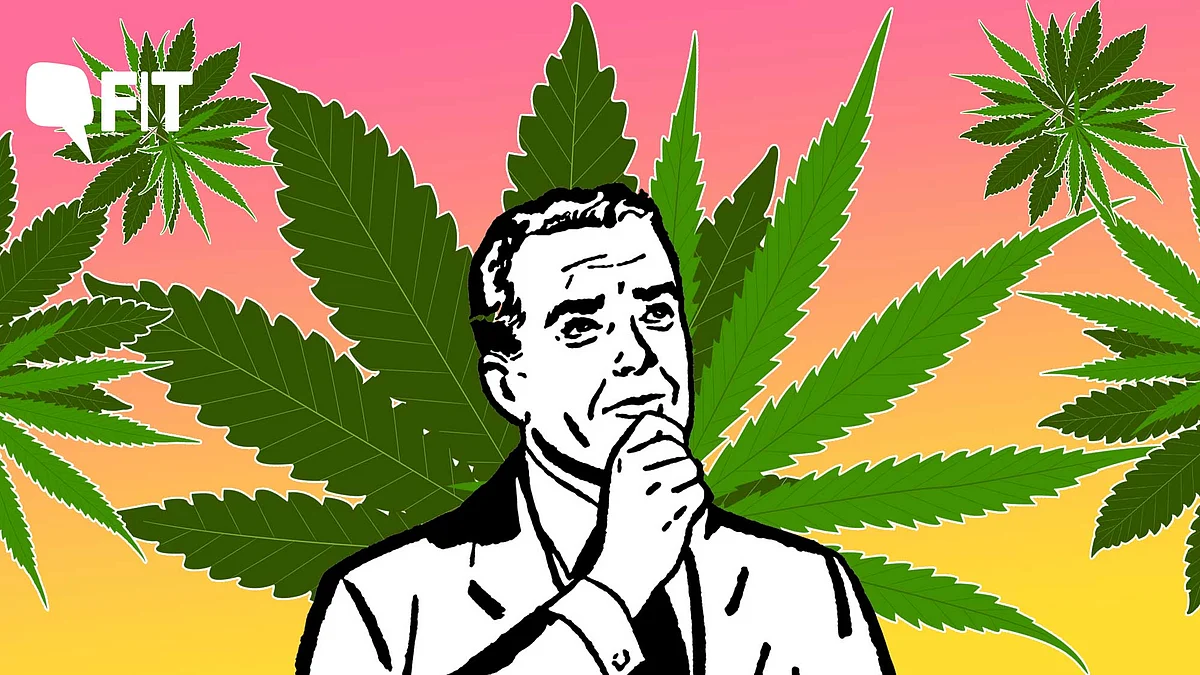
Weed 101: Sativa vs. Indica - What's The Difference And Which Is Better?
Are you smoking indica or sativa? Here's why it matters and what the difference between the two is.

advertisement
Cannabis. Weed. Ganja. Charas. Hash. Pot. Marijuana. The devil's lettuce. Jazz Cabbage. It's known by many names and consumed in many forms, but the one thing most people can safely agree on is that weed is just great has a multitude of uses.
Parts of the cannabis plant are used to create medicines (CBD oil), hemp-based cloth, and to treat a range of disorders. In India, recreational use of cannabis is strictly prohibited under the Narcotics Drugs and Psychotropic Substances Act, 1985. But there are exceptions to this, which we'll cover in this story.
Different strains of cannabis are used to create different medicines and products. The three species of cannabis are Cannabis Sativa, Cannabis Indica, or Cannabis Ruderalis.
These are further categorized into thousands of strains.
Today we'll explain what you should know about these, and we'll also dispel some common myths and misconceptions around the different types of marijuana.
Read on.
Cannabis Sativa vs. Cannabis Indica: A Brief History
Cannabis has many uses from commercial to medicinal and recreational.
(Photo: iStock)
In 1753, botanist Carl Linnaeus, in his book, Species Plantarum, which documented every known species of plant at the time, identified marijuana as JUST one species of plant - Cannabis sativa. There were no two strains, it was just the one type, according to him.
Cannabis indica was discovered by biologist Jean-Baptiste Lamarck in 1785, when he was given marijuana specimens from India.
On the basis of physical characteristics like the thickness of the plant's bark, the shape of leaves, and the height of the plant, Lamarck felt that this plant should be categorized differently from Cannabis sativa. Thus, he coined the species Cannabis indica.
At some point in the history of marijuana's use, this classification which was based on appearance and economics extended to also mean different effects that each strain had.
Cannabis Sativa vs. Cannabis Indica: Appearance and Effects
Cannabis plant maturing outdoor in Nepal.
(Photo: iStock)
The primary distinguishing factor between the two species is the appearance of the plants.
Cannabis sativa plants tend to have broader, shorter leaves that tend to have little spacing, while cannabis indica plants sport long, thin leaves with big spacing between them.
These two are then sub-categorized into thousands of strains with different effects.
The compounds that cause this "high" are Delta-9-tetrahydrocannabinol (THC) and cannabidiol (CBD).
THC is the compound that gets you "high" while CBD is the compound that produces feelings of relaxation. In medical use, marijuana or its derivatives and extracts will have just CBD or just THC or a combination of both, depending on the purpose it's prescribed for.
Cannabis Sativa vs. Cannabis Indica: Medical Uses and Differences
While the NDPS act prohibits the recreational use of cannabis, the leaves and seeds of the plant are exempt from the act. So, technically, CBD oil extracted from the leaf of the cannabis plant, under the Drugs and Cosmetics Act,1940 is legal.
According to Medical News Today, strains of cannabis sativa are used to boost energy, ease depression, and increase focus and creativity, while strains of cannabis indica have a sedative effect and help increase appetite and promote better sleep.
Cannabis Sativa vs. Cannabis Indica: Myths and Misconceptions
Representational Image.
(Photo Courtesy: Unsplash)
But, to put it politely, that's a load of bull.
Dr. Ethan Russo, psychopharmacology researcher, and Medical Director of PHYTECS, a biotechnology company with a focus on the human endocannabinoid system, says that there's no scientific proof or backing to show that indica and sativa strains have different effects, purely based on whether they belong to indica or sativa species.
The only way to tell the difference, Dr Russo adds, is a biochemical assay, which can tell what is really in the plant. More importantly, the terpenes in the cannabis, and terpene concentration, in tandem with the THC and CBD content determine the plant's potency.
Terpenes are what give cannabis its aroma. Terpenes protect the plant from the environment and other dangers. Several studies have looked into how terpenes affect the plant's THC and CBD content in what's called the "entourage effect".
The "entourage effect" is a cover-all term to refer to the "high" produced by consuming cannabis. If anything, the only species of cannabis that stands out from the other two DISTINCTLY is Cannabis ruderalis.
What is Cannabis Ruderalis?
CBD oil is used to treat a range of problems like pain, loss of appetite, nausea, and more.
(Photo: iStock)
The term ruderalis finds its roots in the Latin rudera or rudus, which means lump, debris, rubble, or rough piece of bronze.
Cannabis ruderalis is a species of weed that was first discovered in Europe. It is native to Russia and Central Europe and it stands out because of its low THC content and high CBD content.
Rather, they're commonly used to create medicine to supplement treatments for depression, anxiety, PTSD, pain, opioid withdrawal, and many other problems.
Ruderalis strains are renowned for their use as folk medicine, in both Russian and Mongolian culture.
Ruderalis strains of cannabis are auto-flowering plants, which means unlike the other two strains which only flower after fertilization, ruderalis strains flower automatically without much external interference.
If consumed, a ruderalis strain of cannabis will not get one "stoned". Rather it will only induce feelings of relaxation, without the accompanying high.
(At The Quint, we question everything. Play an active role in shaping our journalism by becoming a member today.)
- Access to all paywalled content on site
- Ad-free experience across The Quint
- Early previews of our Special Projects
Published: 04 May 2022,02:34 PM IST